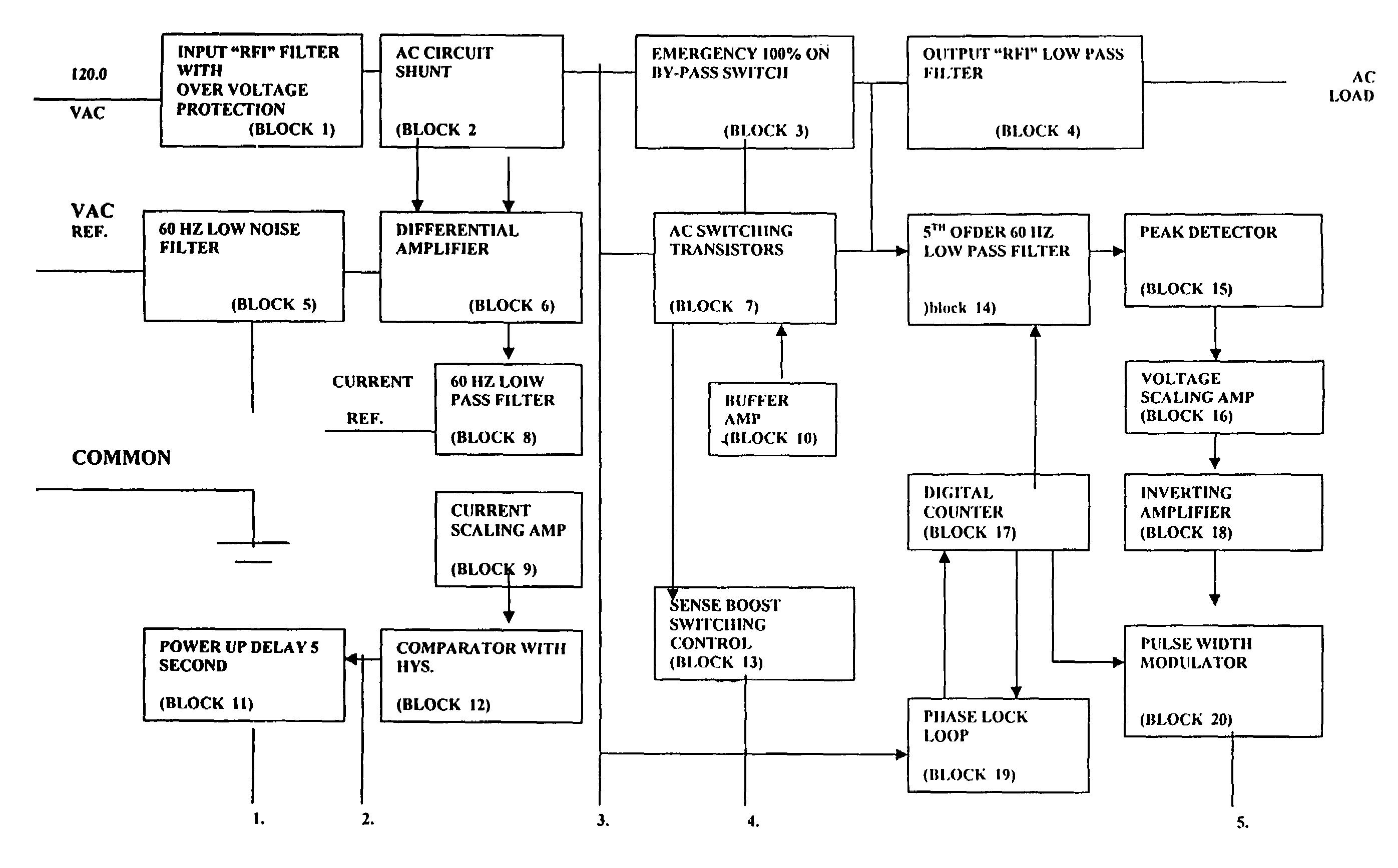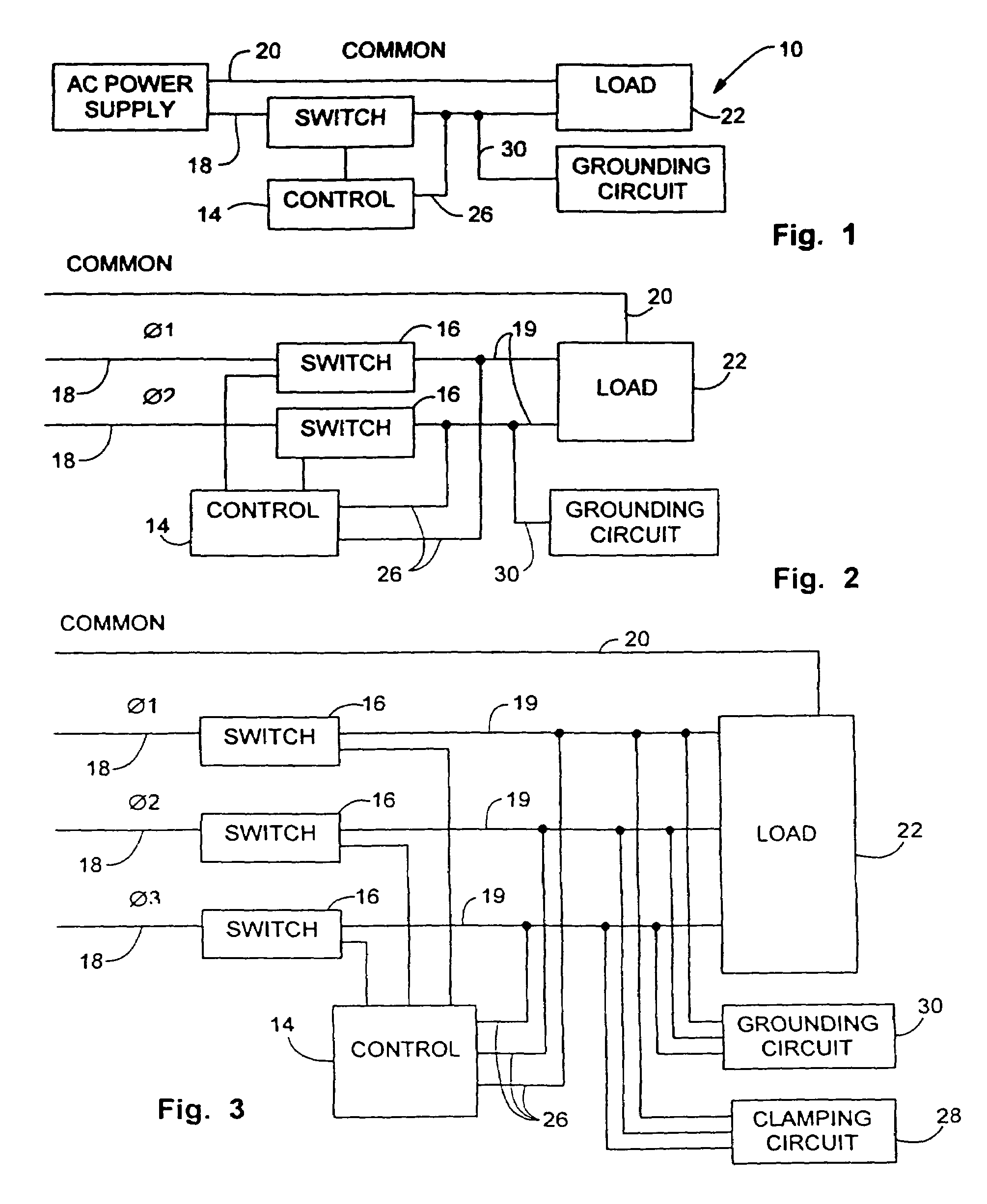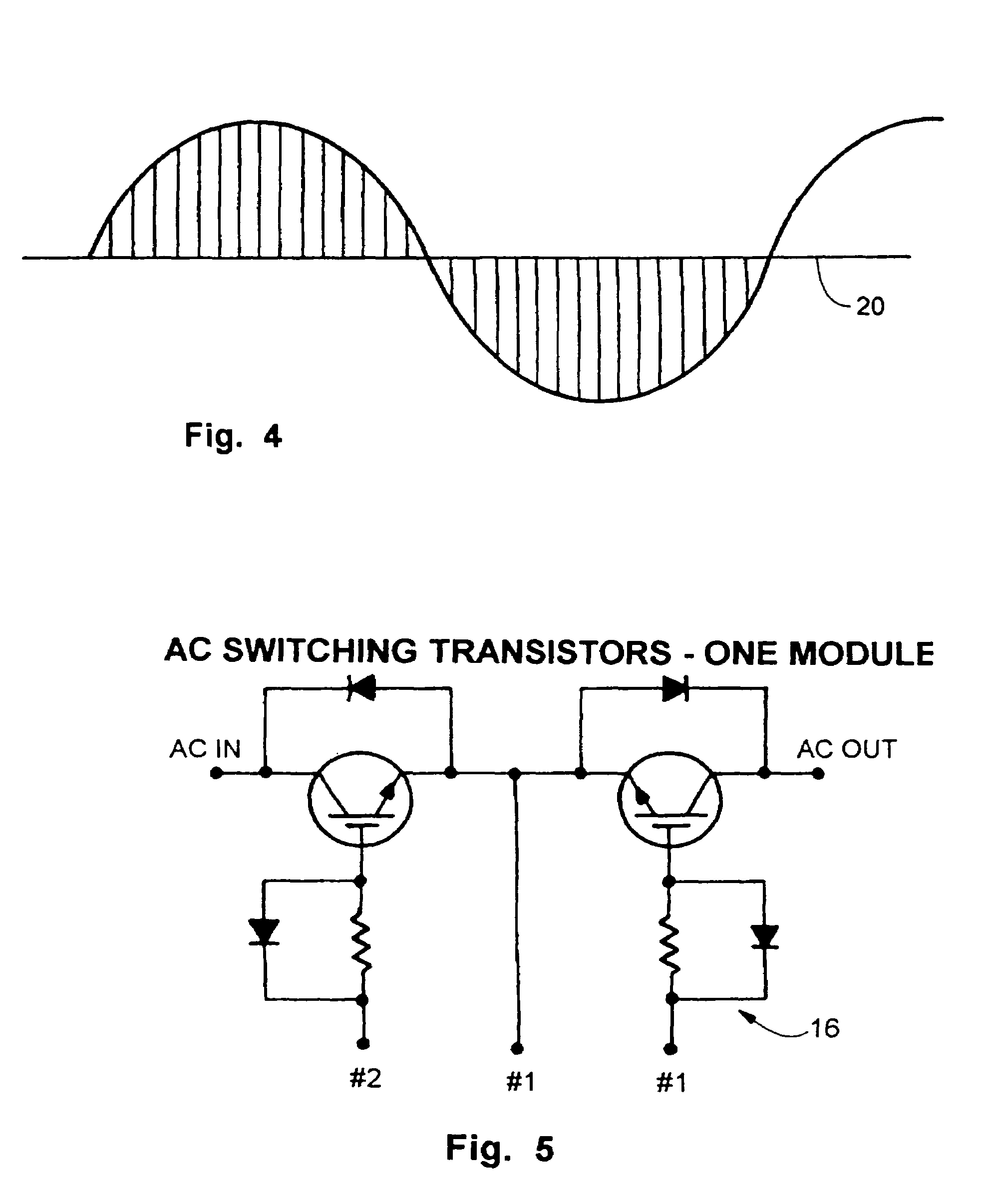Electrical power conservation apparatus and method
a technology of electric power conservation and apparatus, applied in the direction of electric variable regulation, process and machine control, instruments, etc., can solve the problems of affecting the efficiency of electrical power saving, etc., to achieve economic and convenient installation and energy saving
- Summary
- Abstract
- Description
- Claims
- Application Information
AI Technical Summary
Benefits of technology
Problems solved by technology
Method used
Image
Examples
Embodiment Construction
[0057]Referring now to the drawing FIGS. 1-9, which depict the current preferred embodiments of the device disclosed herein, specifically FIG. 1 is component depiction of the device 10 in its simplest embodiment featuring a control unit 14 operating a switching means 16 interrupting current flowing in an AC circuit for a plurality of micro second increments. The device is pictured with a switching means 16 interrupting current flow in an AC circuit 12 comprising a live or energized wire 18 and a neutral wire 20 and is depicted interrupting the live or energized wire 18 rather than the neutral wire 20 or ground which provides for the other half of the circuit for electrical energy provided to the load 22 from an AC power supply 24 such as the conventional power grid from a power plant. While insertion into the energized wire 18 on multiple phased circuits with multiple energized wires 18 works best due to the fact that less current needs to be switched, when used in a two-wire single...
PUM
 Login to View More
Login to View More Abstract
Description
Claims
Application Information
 Login to View More
Login to View More - R&D
- Intellectual Property
- Life Sciences
- Materials
- Tech Scout
- Unparalleled Data Quality
- Higher Quality Content
- 60% Fewer Hallucinations
Browse by: Latest US Patents, China's latest patents, Technical Efficacy Thesaurus, Application Domain, Technology Topic, Popular Technical Reports.
© 2025 PatSnap. All rights reserved.Legal|Privacy policy|Modern Slavery Act Transparency Statement|Sitemap|About US| Contact US: help@patsnap.com



